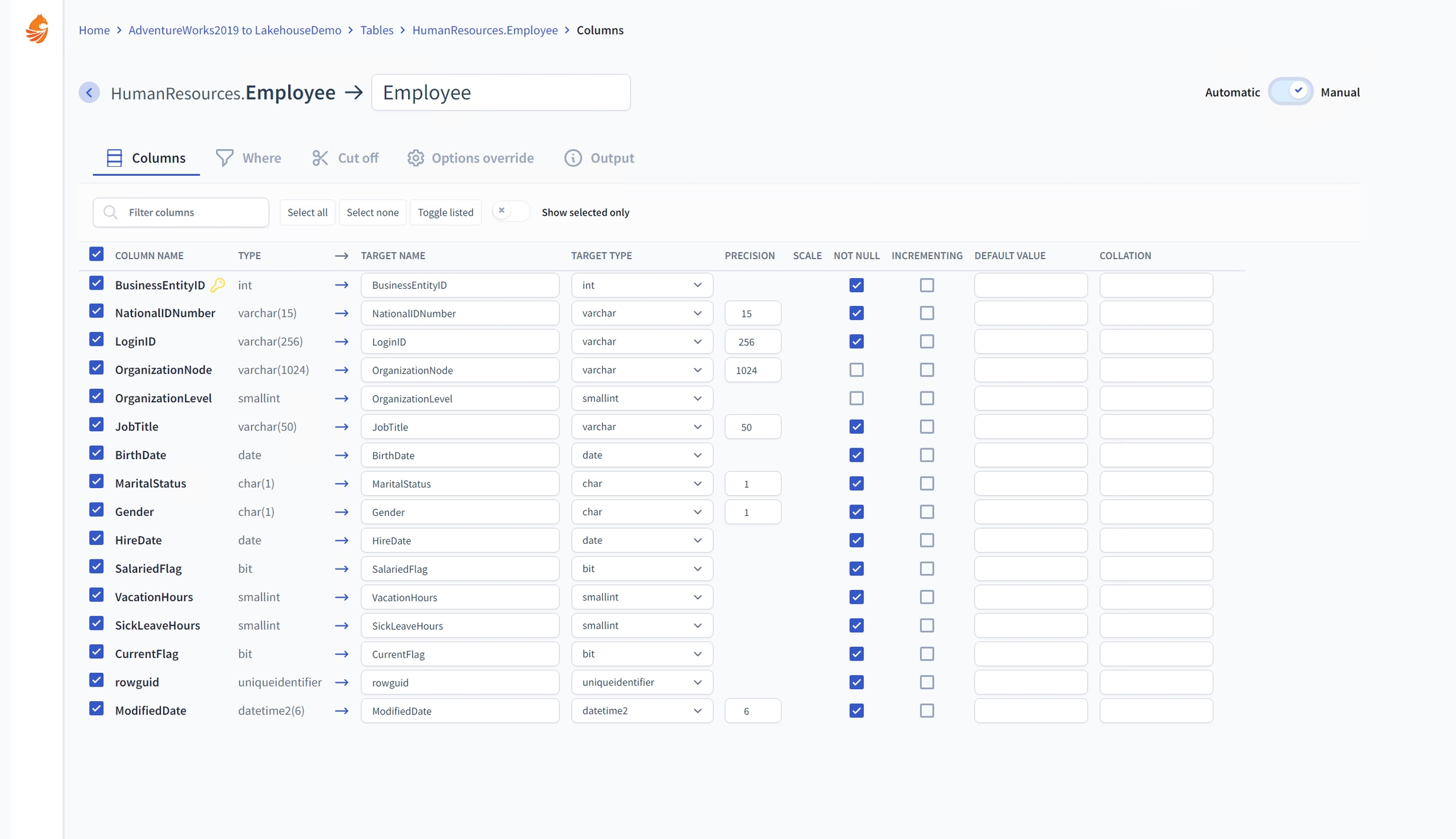Options Override
Target table
Recreate This option will drop the existing target table and create a new one. It is useful when you want to ensure the table schema is exactly as defined in the migration specifications, typically used when the target schema may have changed.
Expect Existing When selected, the migration process anticipates that the target table already exists and will not attempt to create it. This is suitable for incremental updates or when the table structure in the target database should remain untouched.
Table indexing
Primary Key This option maintains the primary key as the indexing strategy for the target table. It's essential for enforcing uniqueness and optimizing performance for data retrieval operations.
Clustered Columnstore Index Choosing this option will apply a clustered columnstore index to the target table. This type of index is optimized for data warehousing and analytics workloads, providing high levels of data compression and efficient query performance on large datasets.
Table Slices
This numeric value defines the number of partitions to divide the table's data into during the migration process. Setting it to '60' means the data will be split into 60 separate slices, which can be processed in parallel, potentially speeding up the migration and reducing load on the source system. This is especially useful for very large tables where data volume can be a bottleneck.
Slicing Column
This field is used to specify the name of the column in the source table that will be used to determine the boundaries for each slice of data. The column chosen typically has a wide range of values which allows the data to be evenly distributed among the slices, facilitating an efficient, parallelized migration process.

Last updated